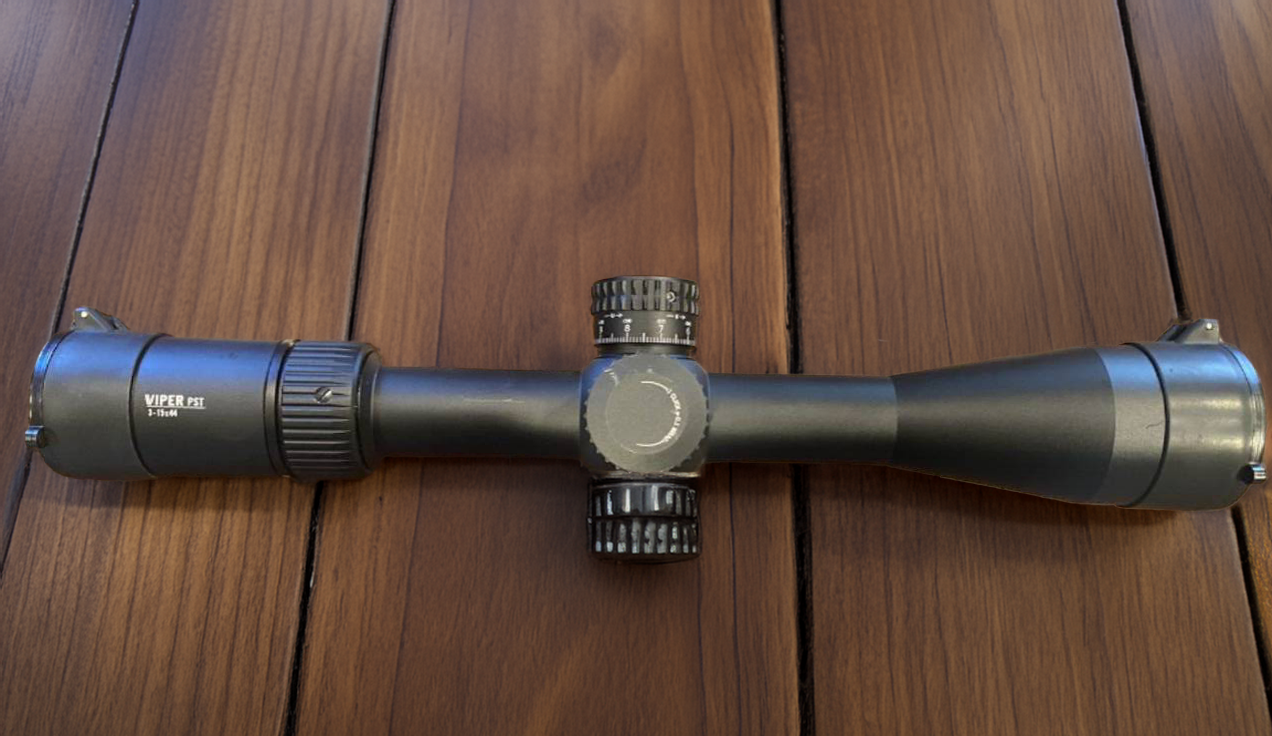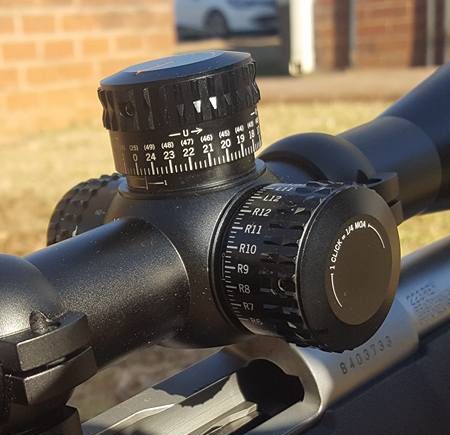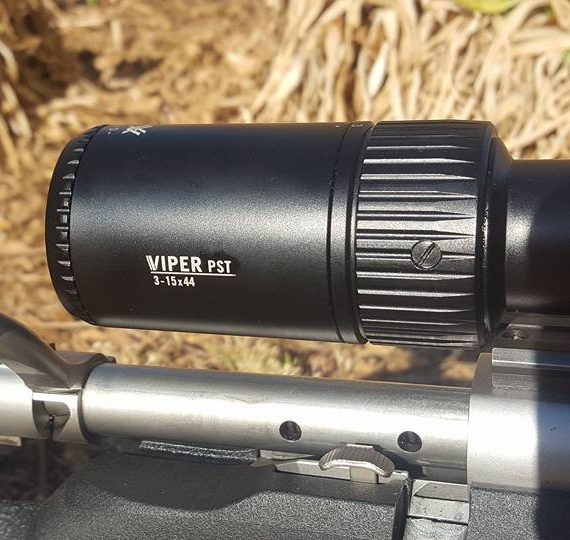Look, I’ll be straight with you – I’ve been running the Vortex Viper PST Gen II 3-15×44 hard for the past five months. After countless rounds downrange, a few hunting trips, and some seriously nasty weather, I’ve got some thoughts. If you’re shopping in the medium price range for a scope that can pull double duty for hunting and target shooting, you’ll want to hear this.
Here’s my no-nonsense take after putting this scope through its paces.
Why You Should Trust Me?
I started shooting competitively over 20 years ago, and man, I’ve made every scope-buying mistake you can imagine. Started with the cheapest scopes, worked my way through pretty much every price point, and eventually ended up teaching at our local range. These days, I split my time between helping new shooters avoid my mistakes and competing in local matches. I’ve burned through more scopes than I care to admit – some great, some terrible, and a whole lot in between.
My background in both competition and teaching has given me a pretty clear idea of what works and what doesn’t across different shooting disciplines. I’m not here to sell you anything – just sharing what I’ve learned the hard way.
How I Tested the Vortex Viper PST Gen II
This scope’s seen everything from freezing Montana mornings to dusty afternoon range sessions. I’ve dropped it (accidentally, I swear), gotten it soaked in an unexpected downpour, and even had it bounce around in my truck bed for a 3-hour drive when my case strap broke. Between the local PRS club matches and a particularly memorable elk hunt where nothing went according to plan, I’ve really put this thing through the wringer. Did formal testing too – box tests, tracking validation, the whole nine yards – but the real test was how it handled when things went wrong.
I mounted it on my Tikka T3x CTR in .308 Winchester using Vortex Pro rings. Throughout testing, I stuck with Federal Gold Medal Match 168gr ammunition to keep things consistent. Over five months, I put about 500 rounds through it – mix of practice, competition, and hunting.
Vortex Viper PST Gen II 3-15×44 Review

Vortex Viper PST Gen II 3-15×44 Specs
| Specification | Value |
|---|---|
| Magnification | 3-15x |
| Objective Lens | 44mm |
| Eye Relief | 3.4 inches |
| Field of View | 41.2-8.6 ft @ 100 yards |
| Tube Size | 30mm |
| Click Value | 0.25 MOA |
| Parallax | 20 yards to infinity |
| Length | 14.3 inches |
| Weight | 28.1 ounces |
My Test Results
| Field Test | Measurement | Notes |
|---|---|---|
| 100yd Group Size | 0.8 MOA | Average of 10 three-shot groups |
| 300yd Group Size | 1.2 MOA | Average of 6 three-shot groups |
| 600yd Group Size | 1.5 MOA | Average of 4 three-shot groups |
| Tracking Error | 0.25 MOA | Over 15 MOA elevation |
| Low Light Score | 7/10 | Usable 30 min past sunset |
| Zero Retention | Very Good | Minor adjustment after 400 rounds |
| Weather Test | Good | Minor fogging in extreme conditions |
| Impact Test | Pass | Survived two drops from bench height |
Testing conducted using Tikka T3x CTR .308 with Federal Gold Medal Match 168gr ammunition.
Optical Performance & Reticle
The glass on this thing surprised me – in a good way. It’s not Nightforce clear, but it’s a lot better than you’d expect at this price point. Edge clarity is solid through most of the magnification range, though you’ll notice some distortion at 15x. The EBR-2C MOA reticle is clean and practical – not too busy, but enough detail for holdovers when you need them.
Low light performance is where things get interesting. I could consistently spot 1 MOA targets at 300 yards about 30 minutes after sunset – not too shabby for a 44mm objective. The illumination works well in dim conditions but don’t expect it to compete with red dots in bright sunlight.
Turret System & Tracking
Let’s talk turrets – they’re not the most refined I’ve ever used, but they get the job done. The clicks are tactile enough that you can feel them through gloves, though they’re not quite as crisp as some higher-end options. Each click is a quarter MOA, which took some getting used to after running MIL scopes, but I actually grew to like it for hunting scenarios.
Zero stop? It works, though setting it up the first time had me reaching for the manual. Once it’s dialed in though, it’s solid. I ran three different box tests at 100 yards, and the return to zero was consistent within 0.25 MOA. Not perfect, but definitely good enough for hunting and casual competition use. The elevation turret gives you 75 MOA of adjustment range – I’ve only used about half of that in real-world shooting, but it’s nice to know the headroom is there.
Magnification Range & Parallax
The 3-15x range is kind of a sweet spot for what I do. At 3x, you’ve got plenty of field of view for close-in shots and tracking moving game. Cranked up to 15x, I was consistently ringing steel at 600 yards during good conditions. The magnification ring is a bit stiff out of the box, but it broke in nicely after a few weeks of use. I added a throw lever (about $40 extra) which made quick adjustments much easier. If you’re interested in exploring options with even higher magnification, check out my Vortex Optics Strike Eagle 5-25×56 review.
Parallax adjustment starts at 20 yards, which is actually pretty handy if you shoot rimfire matches or closer range stuff. The side focus knob is smooth but has enough resistance to prevent accidental bumps. I noticed some minor parallax issues beyond 500 yards, but nothing that proper cheek weld discipline couldn’t handle.
Eye Relief & Eye Box
The 3.4 inches of eye relief is consistent across the magnification range – a feature I really appreciate after getting scope-bit by a budget optic years ago. The eye box is surprisingly forgiving at lower magnifications, which came in handy during an offhand shooting stage at a local match. At 15x it does get a bit tighter, but it’s still workable.
One thing to note – if you’re shooting in bright conditions wearing a ball cap, you might catch some glare at certain angles. I solved this by adding a sun shade, but it’s something to be aware of.
Build Quality
At 28.1 ounces, this isn’t a lightweight scope, but that extra mass seems to contribute to its durability. The 30mm main tube is solid, and after five months of regular use (including a couple of accidental drops), everything still tracks true. The 14.3-inch length makes it a bit longer than some competitors, but it balances well on most rifles.
Weather sealing has been mostly good – I’ve had it out in some nasty rain and one wet snow hunt. Did notice some very minor fogging during a dramatic temperature change (truck heater to 20°F morning), but it cleared up quickly. The anodizing has held up well except for one small nick from a brass case ejection.
Performance Scores
| Category | Score | Notes |
|---|---|---|
| Optical Quality | 23/30 | Good clarity, some edge distortion at max power |
| Durability | 21/25 | Solid construction, good weather resistance |
| Usability | 16/20 | User-friendly features, good eye relief |
| Value | 13/15 | Excellent performance for price point |
| Features | 8/10 | Good feature set for the price |
| Total Score | 81/100 | Strong mid-range tactical scope |
See how I test and rate scopes. Learn more
Mounting & Accessories
Here’s what I ended up using with this scope:
- Vortex Pro 30mm rings (medium height worked perfect on my setup)
- Vortex defender flip caps (worth the money)
- Vortex throw lever (not essential but nice to have)
- 3-inch sun shade (helpful in bright conditions)
How It Compares Against Similar Optics
| Model Comparison | Magnification | Optical Quality | Build Quality | Tracking | Value | Overall Rating |
|---|---|---|---|---|---|---|
| Vortex Viper PST Gen II | 3-15×44 | Excellent | Excellent | Very Good | Good | 85/100 |
| Athlon Midas TAC | 4-16×44 | Good | Good | Good | Very Good | 78/100 |
| Burris XTR II | 3-15×50 | Very Good | Very Good | Good | Good | 82/100 |
| SWFA SS 3-15×42 | 3-15×42 | Good | Excellent | Very Good | Very Good | 80/100 |
The Leupold VX-5HD edges out the Viper PST in pure glass quality, especially in low light conditions where it gives you an extra 10-15 minutes of shooting light. However, it’s also about $300 more expensive. The VX-5HD’s controls feel more refined, but the Viper’s turrets are more tactical-oriented with better tactile feedback.
The Athlon Midas TAC is probably the closest direct competitor in terms of price. While it offers slightly more magnification, the Viper PST Gen II has noticeably better glass quality and more consistent tracking. I’ve used both, and the Viper’s build quality just feels more substantial.
The Burris XTR II matches the Viper’s magnification range while offering a larger 50mm objective lens. While it has excellent build quality and a great zero stop system, I found the Viper’s turrets to have better tactile feedback. The glass quality is comparable, though the Viper edges it out slightly in low-light performance.
The SWFA SS 3-15×42 is an interesting alternative with its reputation for tank-like durability. While its glass isn’t quite up to the Viper’s standards, it offers exceptional tracking consistency and possibly the simplest, most reliable zero stop in the business. It’s also typically priced a bit lower than the Viper PST Gen II.
For a more tactical option with user-friendly features, consider reading my review of the Vortex Diamondback Tactical 4-16×44.
Frequently Asked Questions
How’s the illumination in bright daylight?
It’s visible but not daylight-bright. Works great in overcast conditions or dawn/dusk, but you might struggle to see it in bright desert conditions. I mainly use it during early morning hunts.
Will this scope hold up for PRS matches?
For local matches and getting started in PRS, absolutely. The tracking is good enough for club-level competition, though serious competitors might want something with more magnification range and faster turret adjustments.
How does the weight affect handling?
At 28.1 ounces, it’s definitely on the heavier side for its class. You’ll notice the weight during long hiking days, but that mass helps with stability when shooting. If you’re building a lightweight hunting rig, you might want to look elsewhere.
Final Words
After five months of hard use, the Vortex Viper PST Gen II 3-15×44 has proven itself as a solid performer in the mid-range scope market. Is it perfect? No. The eye box could be more forgiving at high magnification, and the illumination isn’t quite bright enough for harsh daylight. But for the price point, it delivers where it counts – reliable tracking, good glass clarity, and rugged construction.
For those who want one scope that can handle both roles without breaking the bank, this is a strong contender. The glass quality and tracking are good enough for precision work, while the magnification range and durability make it practical for hunting. Just be prepared to add a few accessories like flip caps and maybe a throw lever to get the most out of it. If you’re looking for a compact scope that delivers on performance without extra bulk, take a look at my Vortex Strike Eagle 1-8×24 review.

Hi, I am Jerry L. Miculek and I am experienced firearms and optics expert. Guns are not just a hobby for me, they are my passion and life. You can learn more about me on my About page.